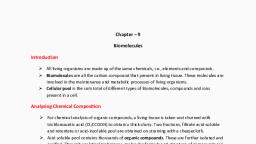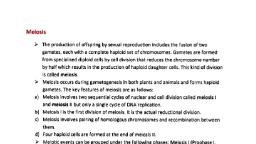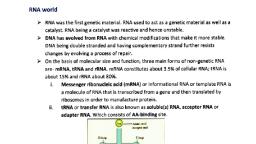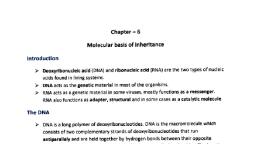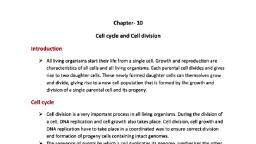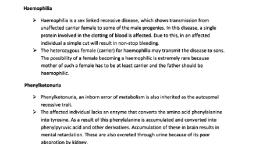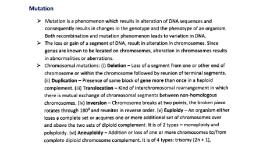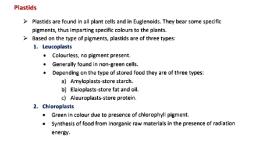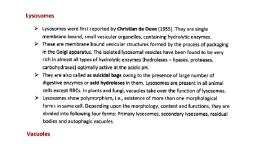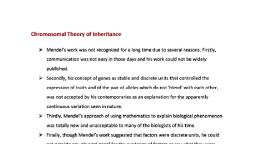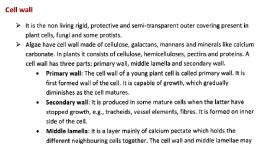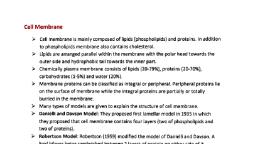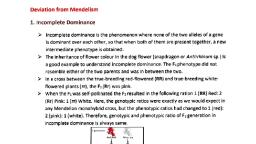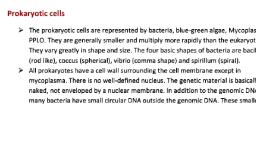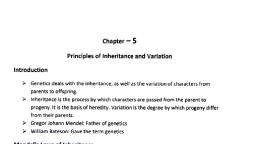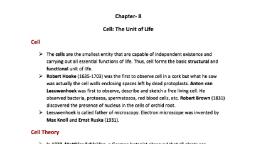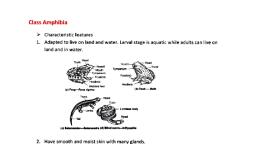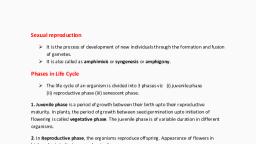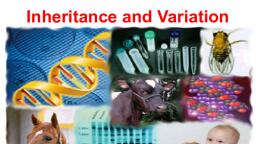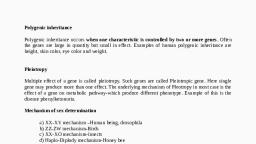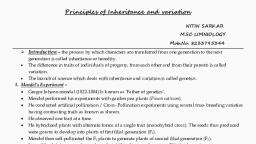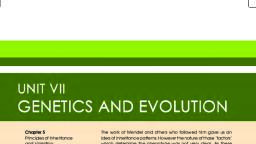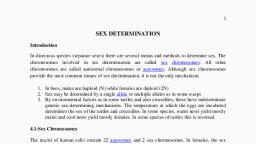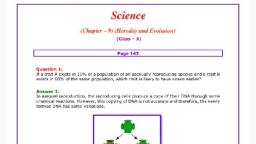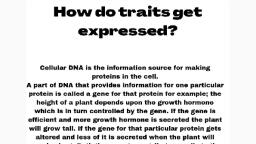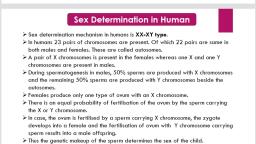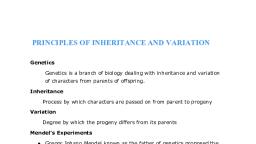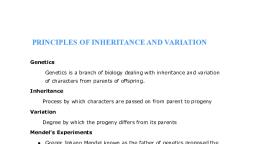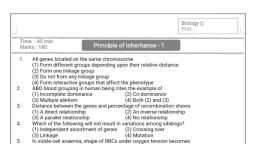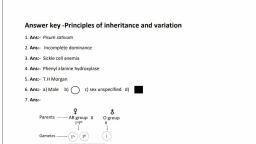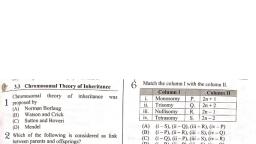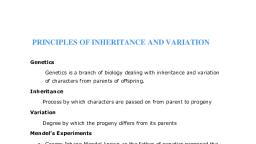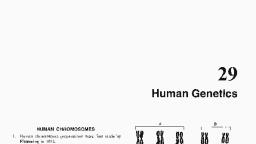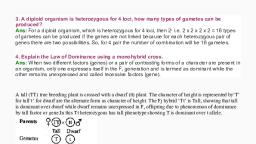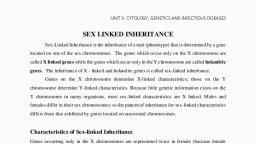Page 1 :
Polygenic Inheritance, or more genes is called polygenic inheritance., Inheritance controlled, >Few examples of polygenic inheritance are skin colour in human beings, height in, , bythree, , human beings, kernel colour in wheat, etc., , Human skin colour is caused by pigment called melanin. The quantity of melanin is, due to three pairs of polygenes (A, B and C). The genotype with all the dominant, , alleles (AABBCC) will have the darkest skin colour and that with all recessive alleles, will have lightest skin colour. Genotype with 3 dominant alleles and 3 recessive, alleles will have an intermediate skin colour.
Page 2 :
Pleiotropy, Pleiotropy is a condition in which a single gene influences more than one trait. Itis, due to effect of the gene on two or more inter-related metabolic pathways that, contribute to the formation of different phenotypes., An example of this is phenylketonuria disease in humans. This disease is caused by, mutation in the gene that codes for enzyme phenylalanine hydroxylase, required to, change phenylalanine to tyrosine. This is characterised by mental retardation and a, reduction in hair and skin pigmentation., , Sex determination, Sex determination is the method by which distinction between males and females is, established in a species., The sex of an individual is determined by specific chromosomes. These, chromosomes are called sex chromosomes or allosomes. X and Y chromosomes are, called sex chromosomes. The normal chromosomes other than the sex, chromosomes of an individual are known as autosomes., Henking discovered X-body in 50% of sperm of few insects., , Types of Chromosomal Sex Determination, XX-XY type, I n this type ofsex determination, female is homogametic (XX), i.e., produces only, one type of gamete. Females have a pair of X-chromosomes. Male is heterogametic, (XY), i.e., male produces two types of gamete. Males have an X-chromosome and, another smaller Y-chromosome. In male, X-chromosome containing gametes is, called gymnosperm and Y-chromosome containing gamete is called androsperm., Both males and females have same number of autosomes. XX-XY type of sex, determination is seen in humans and Drosophila., XX-XO type, I n this type of sex determination, males have only one sex chromosome. Males are, heterogametic, i.e., some sperms bear X-chromosome whereas some do not. Female, is homogametic (XX)., Eggs fertilised by sperms having an X-chromosome become female, and eggs, , fertilised by sperms without X-become males. Thus, female is (2A+ XX) and male is, (2A+X0)., I t is found in some insects (grasshopper, cockroach) and roundworms.
Page 3 :
ZW-2Z type, , I n this type of sex determination female is heterogametic, i.e., produces two types of, gamete (Z and W) and male individual is homogametic, i.e., produces one type of, gamete (Z). it is found in birds and some reptiles., , zo-2Z type, I n ZO-2Z type of sex determination, females have odd sex chromosome (AA+Z), while the males have two homomorphic sex chromosomes (AA +2Z). It is found in, some butterflies and moths., , Haploid-Diploid Mechanism ofSex Determination, I t is observed in insects of Order Hymenoptera, which includes ants, honeybees,, wasps, etc., , S e x determination is based on number of sets of chromosomes an individual, receives., , Female (queen and worker bees) develop from union of sperms and egg, i.e.,, fertilised egg, whereas male (drone) develops from unfertilized eggs (haploid) by, , parthenogenesis., Males are haploid having 16 chromosomes, while females are diploid with 32, chromosomes. Meiosis does not occur during formation of sperms., , Sex determination in Humans, The sex determination mechanism in case of humans is XY type. Out of 23 pairs of, chromosomes present, 22 pairs are autosomes. The autosomes are exactly same in, both males and females. A pair of X-chromosomes are present in the female,, whereas the presence of an X and Y chromosome are determinant of the male, characteristic., , I n males during spermatogenesis two types of gametes are produced. 50 per cent of, the total sperm produced carry the X-chromosome and the rest 50 per cent has Y, chromosome besides the autosomes. Females, however, produce only one type of, ovum with an X-chromosome., , There is an equal probability of fertilisation of the ovum with the sperm carrying, either X or Y chromosome. In case the ovum fertilises with a sperm carrying Xchromosome the zygote develops into a female (Xx) and the fertilisation of ovum, with Y-chromosome carrying sperm results into a male offspring. Thus, it is clear that, it is the genetic makeup of the sperm that determines the sex of the child., , Sex-linked inheritance is the transmission of characters along with sex determining, genes present on the sex chromosomes, which are inherited together from one, generation to the next. Sex-linked traits are more apparent in males than in females., , Females generally function as carriers of sex-linked disorders because recessive

